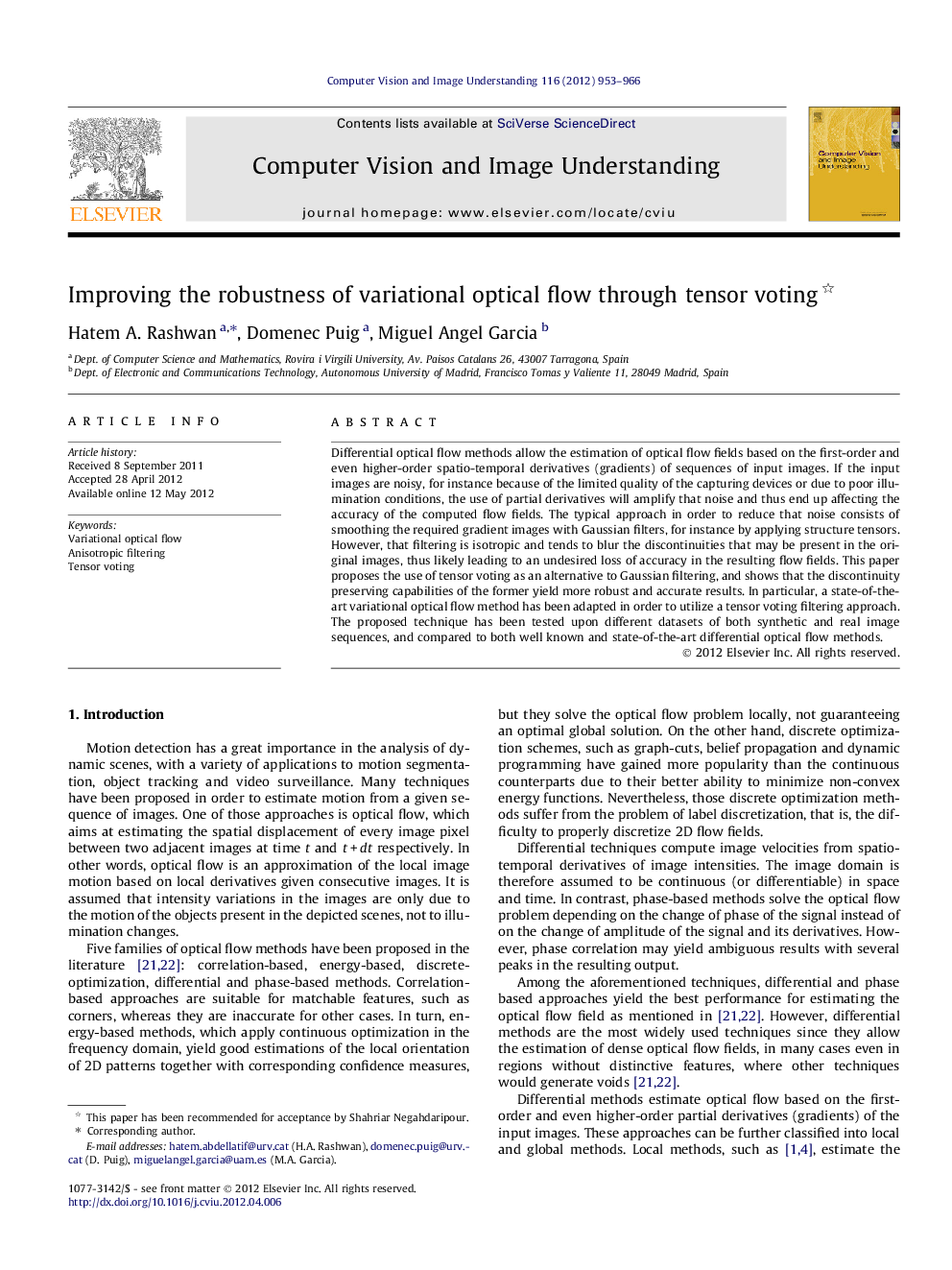| Article ID | Journal | Published Year | Pages | File Type |
|---|---|---|---|---|
| 527838 | Computer Vision and Image Understanding | 2012 | 14 Pages |
Differential optical flow methods allow the estimation of optical flow fields based on the first-order and even higher-order spatio-temporal derivatives (gradients) of sequences of input images. If the input images are noisy, for instance because of the limited quality of the capturing devices or due to poor illumination conditions, the use of partial derivatives will amplify that noise and thus end up affecting the accuracy of the computed flow fields. The typical approach in order to reduce that noise consists of smoothing the required gradient images with Gaussian filters, for instance by applying structure tensors. However, that filtering is isotropic and tends to blur the discontinuities that may be present in the original images, thus likely leading to an undesired loss of accuracy in the resulting flow fields. This paper proposes the use of tensor voting as an alternative to Gaussian filtering, and shows that the discontinuity preserving capabilities of the former yield more robust and accurate results. In particular, a state-of-the-art variational optical flow method has been adapted in order to utilize a tensor voting filtering approach. The proposed technique has been tested upon different datasets of both synthetic and real image sequences, and compared to both well known and state-of-the-art differential optical flow methods.
► New optical flow scheme with anisotropic filtering based on tensor voting. ► Input images pre-segmented into three regions based on spatio-temporal gradients. ► Tensor voting filtering applied to spatio-temporal gradients of every region. ► Accurate flow fields estimated with variational approach from filtered gradients. ► Proposed scheme is qualitatively competitive against state-of-the-art approaches.
